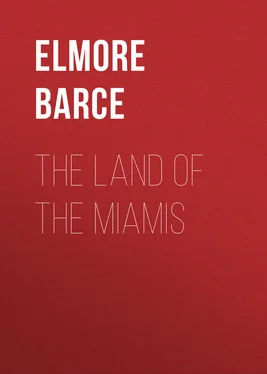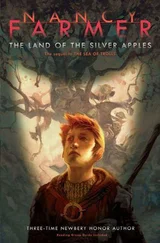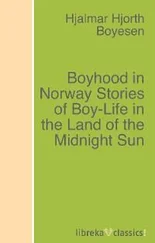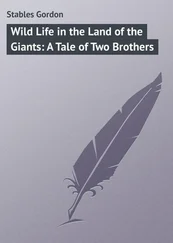Elmore Barce - The Land of the Miamis
Здесь есть возможность читать онлайн «Elmore Barce - The Land of the Miamis» — ознакомительный отрывок электронной книги совершенно бесплатно, а после прочтения отрывка купить полную версию. В некоторых случаях можно слушать аудио, скачать через торрент в формате fb2 и присутствует краткое содержание. ISBN: , Жанр: foreign_antique, foreign_prose, Историческая проза, на английском языке. Описание произведения, (предисловие) а так же отзывы посетителей доступны на портале библиотеки ЛибКат.
- Название:The Land of the Miamis
- Автор:
- Жанр:
- Год:неизвестен
- ISBN:http://www.gutenberg.org/ebooks/30244
- Рейтинг книги:4 / 5. Голосов: 1
-
Избранное:Добавить в избранное
- Отзывы:
-
Ваша оценка:
- 80
- 1
- 2
- 3
- 4
- 5
The Land of the Miamis: краткое содержание, описание и аннотация
Предлагаем к чтению аннотацию, описание, краткое содержание или предисловие (зависит от того, что написал сам автор книги «The Land of the Miamis»). Если вы не нашли необходимую информацию о книге — напишите в комментариях, мы постараемся отыскать её.
The Land of the Miamis — читать онлайн ознакомительный отрывок
Ниже представлен текст книги, разбитый по страницам. Система сохранения места последней прочитанной страницы, позволяет с удобством читать онлайн бесплатно книгу «The Land of the Miamis», без необходимости каждый раз заново искать на чём Вы остановились. Поставьте закладку, и сможете в любой момент перейти на страницу, на которой закончили чтение.
Интервал:
Закладка:
"The Wabash, is a beautiful river, with high and upright banks, less subject to overflow than any other river (the Ohio excepted) in this part of America. It discharges itself into the Ohio, one thousand twenty-two miles below Fort Pitt, in latitude thirty-seven degrees, forty-one minutes. At its mouth, it is two hundred and seventy yards wide; is navigable to Ouiatenon (four hundred twelve miles) in the spring, summer, and autumn with bateaux and barges, drawing about three feet of water. From thence, on account of a rocky bottom, and shoal water, large canoes are chiefly employed, except when the river is swelled with rains, at which time, it may be ascended with boats, such as I have just described (197 miles further) to the Miami carrying place, which is nine miles from the Miami village (Author's note: Miamitown or Fort Wayne), and this is situated on a river of the same name (Author's note: The Maumee was formerly called "Miami of the Lake"), that runs into the southwest part of Lake Erie. The stream of the Wabash, is generally gentle to Fort Ouiatenon, and nowhere obstructed with falls, but is by several rapids, both above and below that post, some of which are pretty considerable. There is also a part of the river for about three miles, and thirty miles from the carrying place, where the channel is so narrow, that it is necessary to make use of setting poles instead of oars. The land on this river is remarkably fertile, and several parts of it are natural meadows, of great extent, covered with fine long grass. The timber is large, and in such variety, that almost all the different kinds growing upon the Ohio, and its branches (But with a greater proportion of black and white mulberry trees), may be found. A silver mine has been discovered about 28 miles above Ouiatenon, on the northern side of the Wabash, and probably others may be found hereafter. The Wabash abounds with salt springs, and any quantity of salt may be made from them, in the manner now done at the Saline in the Illinois country. The hills are replenished with the best coal, and there is plenty of lime and freestone, blue, yellow and white clay, for glass works and pottery."
"Two French settlements are established on the Wabash, called Post Vincent and Ouiatenon; the first is 150 miles, and the other 262 miles from its mouth. The former is on the eastern side of the river, and consists of sixty settlers and their families. They raise corn, wheat and tobacco of an extraordinary good quality, superior, it is said, to that produced in Virginia. They have a fine breed of horses (Brought originally by the Indians from the Spanish settlements on the western side of the Mississippi), and large flocks of swine and black cattle. The settlers deal with the natives for furs and deer skins, to the amount of about 5,000 pounds annually. Hemp of good texture grows spontaneously in the lowlands of the Wabash, as do grapes in the greatest abundance, having a black, thin skin, and of which the inhabitants in the autumn, make a sufficient quantity (for their own consumption) of well-tasted red wine. Hops, large and good, are found in many places, and the lands are particularly adapted to the culture of rice. All European fruits, apples, peaches, pears, cherries, currants, gooseberries, melons, etc., thrive well both here and in the country bordering on the river Ohio."
"Ouiatenon (Author's note: Just below Lafayette), is a small stockaded fort on the western side of the Wabash, in which about a dozen families reside. The neighboring Indians are the Kickapoos, Musquitons, Pyankeshaws, and a principal part of the Ouiatenons. The whole of these tribes consists, it is supposed, of about one thousand warriors. The fertility of soil, and the diversity of timber in this country, are the same as in the vicinity of Post Vincent. The annual amount of skins and furs obtained at Ouiatenon is about 8,000 pounds. By the river Wabash, the inhabitants of Detroit move to the southern parts of Ohio, and the Illinois country. Their route is by the Miami river (Maumee) to a carrying place (Author's note: Miamitown or Fort Wayne), which, as before stated, is nine miles to the Wabash, when this river is raised with freshies; but at other seasons, the distance is from eighteen to thirty miles, including the portage. The whole of the latter is through a level country. Carts are usually employed in transporting boats and merchandise, from the Miami to the Wabash river."
No less wonderful was the valley of the Maumee, directly on the great trade route between the Wabash and the post of Detroit. Croghan, who was a good judge of land, and made careful observations, found the Ottawas and Wyandots here in 1765, the land of great richness, and game very plentiful. It was a region greatly beloved by the Indian tribes, and the scene after the revolution, of many grand councils of the northwestern confederacy. In a letter of General Anthony Wayne, written in 1794, he asserts that: "The margins of these beautiful rivers, the Miamis of the Lake (Maumee), and the Au Glaize (A southern tributary), appear like one continued village for a number of miles, both above and below this place, Grand Glaize, nor have I ever before beheld such immense fields of corn in any part of America, from Canada to Florida."
After General Wayne's army had defeated the Indians at the battle of Fallen Timbers on this river in 1794, they spent many days after that conflict in destroying the fields of grain. One who marched with the army, in August of the above year, describes Indian corn fields extending for four or five miles along the Au Glaize, and estimated that there were one thousand acres of growing corn. The whole valley of the Maumee from its mouth to Fort Wayne, is described as being full of immense corn fields, large vegetable patches, and old apple trees, and it is related that Wayne's army, while constructing Fort Defiance for a period of eight days, "obtained their bread and vegetables from the corn fields and potato patches surrounding the fort."
Is it any wonder that along these wonderful basins should be located the seats of power of the Miami Indians, the leaders of the western confederacy that opposed the claims of the United States to the lands north of the Ohio; that from the close of the Revolutionary war until Wayne's victory in 1794, the principal contest was over the possession of the Miami village, now Fort Wayne, which controlled the trade in both the Wabash and the Maumee Valleys, and that President George Washington, consummate strategist that he was, foresaw at once in 1789, the first year of his presidency, that the possession of the great carrying place at Miamitown would probably command the whole northwest and put an end to the Indian wars?
CHAPTER VI
THE TRIBES OF THE NORTHWEST
– A description of the seven tribes of savages who opposed the advance of settlement in the Northwest. Their location. Kekionga, the seat of Miami power.
We have now to consider those Indian tribes and confederacies, which at the close of the Revolutionary war, inhabited the northwest territory.
Chief among them were the Wyandots, Miamis, Shawnees, Delawares, Ottawas, Chippewas and Potawatomi. These were the seven tribes known in after years as the "western confederacy," who fought so long and bitterly against the government of the United States, and who were at last conquered by the arms and genius of General Anthony Wayne in the year 1794.
The Ottawas, Chippewas and Potawatomi formed a sort of loose confederacy known as the Three Fires, and Massas, a Chippewa chief, so referred to them at the Treaty of Greenville.
The Miamis, the most powerful of the confederates, were subdivided into the Eel Rivers, the Weas, and the Piankeshaws. The Kickapoos, a small tribe which lived on the Sangamon, and the Vermilion of the Wabash, were associated generally with the Potawatomi, and were always the allies of the English. The Winnebagoes of Wisconsin were of the linguistic family of the Sioux; were generally associated with the confederates against the Americans, and many of their distinguished warriors fought against General Harrison at Tippecanoe. The decadent tribes known in early times as the Illinois, did not play a conspicuous part in the history of the northwest.
Читать дальшеИнтервал:
Закладка:
Похожие книги на «The Land of the Miamis»
Представляем Вашему вниманию похожие книги на «The Land of the Miamis» списком для выбора. Мы отобрали схожую по названию и смыслу литературу в надежде предоставить читателям больше вариантов отыскать новые, интересные, ещё непрочитанные произведения.
Обсуждение, отзывы о книге «The Land of the Miamis» и просто собственные мнения читателей. Оставьте ваши комментарии, напишите, что Вы думаете о произведении, его смысле или главных героях. Укажите что конкретно понравилось, а что нет, и почему Вы так считаете.












